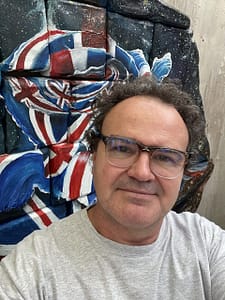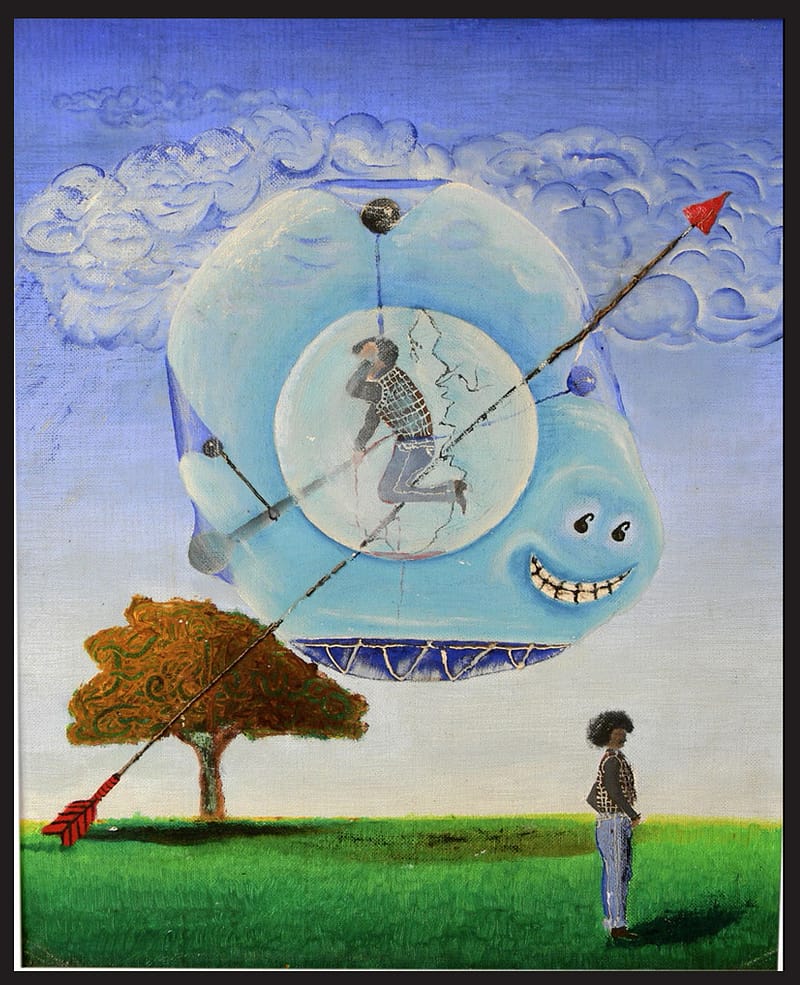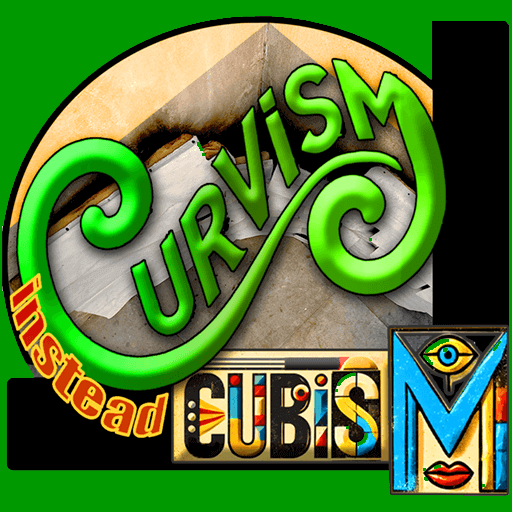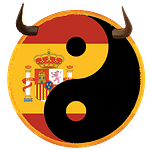
BIOGRAPHY: EVOLVING IN ART Beginnings and Formation

In the 1970s, he began his artistic training at the Arturo Michelena School of Fine Arts in Valencia, Venezuela. This institution, with strong French artistic influences, awakened his imagination and encouraged him to reject the paradigms commonly imposed in other art schools.
He experimented with painting and photography throughout his life, developing a deep love for nature and plants. In the early 1980s, he studied at a Salesian agricultural technical school, where numerous research projects provided him with extensive opportunities for entomological photography sessions.

International Experience

His education expanded internationally when he had the opportunity to study Agricultural Mechanics in Italy and later horticulture in Egypt. He then moved to Israel to live and paint. The daily life of Egyptian and Hebrew peoples became a central theme of his fascinating photographs, which were later celebrated in exhibitions in Venezuela.
He developed an extensive portfolio of photographic studies portraying people and places encountered during long journeys through Mexico, Guatemala, Honduras, Nicaragua, Costa Rica, Panama, Brazil, and almost all of Venezuelan territory. This collection showcases the cultural and landscape diversity that he experienced firsthand.

Professional Career

He was a photojournalist for the community newspaper “EL MEDIO” in Valencia, Venezuela. Dubai Ports hired him as an industrial photographer in Puerto Cabello, where he also created graphic art for events. At DP World, he explored infrared photography for innovative artistic projects.
In 2011, he participated in the prestigious LEICA OSKAR BARNACK AWARD competition with his photographic report “The Secret of In Vitro,” highlighting the complexities of success in artificial insemination, a project completed in 2010.

Social and Ecological Projects

Before emigrating to England, he developed an innovative ecological project that demonstrated how the use of low-cost vertical hydroponic buildings and their control through the Internet could meet the nutritional needs of densely populated areas.
As a photographer, he covered various events for the United Nations Association in Venezuela (ANUV) during the initial implementation of the UN Global Compact. He joined ANUV with a proactive project that considered personal development processes while respecting the diversity of religious, spiritual, and philosophical beliefs, called “Intraterrestrial Artistic Movement,” later known as “The Artists of Peace Space.”

Life in the United Kingdom

To integrate into the United Kingdom, he learned another more complex and subtle art: caring for vulnerable people with mental health issues as a healthcare assistant. During this period, while accompanying some of his patients, he was able to write and publish stories related to his previous art.
A family visit to the Birmingham Museum marked a moment of inspiring epiphany in his artistic journey. In a circular room with a sculpture of Lucifer in the center, surrounded by paintings by various masters depicting powerful landscape motifs, he perceived a deep truth about the contrast between rectangular canvases and the fluid nature of the universe.

Artistic Philosophy
He is critical of the importance of understanding our own ignorance: consciousness highlights what we don’t know and forces us to learn from a place of uncertainty. He considers it essential to engage in lifelong learning that connects us with the values of nature, making us feel part of it rather than its dominators.
Inspired by Nietzsche and adapting his philosophy to art, he maintains: “Art exists to detest and shame stupidity. Its only purpose is to denounce the baseness of thought in all its forms. Art makes thinking aggressive, active, and affirmative. It is the liberator of men.”
He also finds inspiration in Wassily Kandinsky, who stated in “Concerning the Spiritual in Art” (1912): “Understanding is forming and bringing the spectator to the artist’s point of view” and “Every artistic creation is the child of its time and, most often, the mother of our feelings.”

Current Artistic Evolution

His work has evolved toward the fusion of the ancient power of visual storytelling with the cutting-edge possibilities of parametric and biophilic design. Inspired by the fluid and interconnected nature of quantum physics, his art seeks to transcend the limitations of traditional forms and spaces, inviting viewers into a realm where art and science converge.
“I feel that art has the power to catalyze a change in our perception, reflecting the transformative principles of quantum physics,” he explains. “By embracing parametric design and its ability to generate organic and complex forms, and by integrating biophilic elements that connect us with the natural world, we can create spaces that foster a sense of wonder, wellbeing, and expanded consciousness.”
His work challenges the restrictions on human transcendence imposed by our fixation on the geometric rigidity of the Euclidean paradigm. He acknowledges that Euclidean geometry has long been the cornerstone of our understanding, but maintains that as we enter the quantum age, it is vital to recognize the limitations of this framework and embrace more flexible, non-Euclidean perspectives.
His art serves as a powerful testament to the potential of these design principles, demonstrating how they can be harnessed to create immersive experiences that resonate deeply with the human spirit.

Share this:
- Click to share on Facebook (Opens in new window) Facebook
- Click to share on X (Opens in new window) X
- Click to print (Opens in new window) Print
- Click to email a link to a friend (Opens in new window) Email
- Click to share on LinkedIn (Opens in new window) LinkedIn
- Click to share on WhatsApp (Opens in new window) WhatsApp

